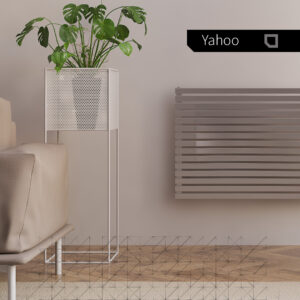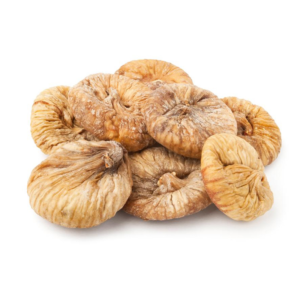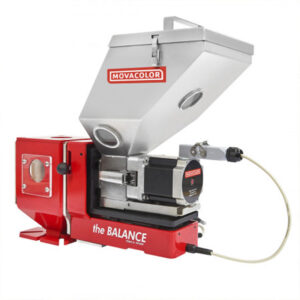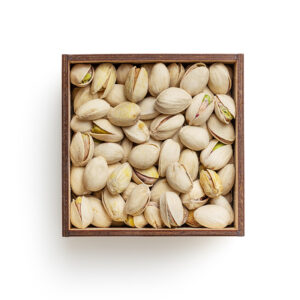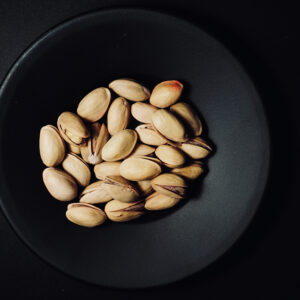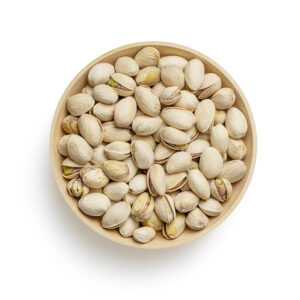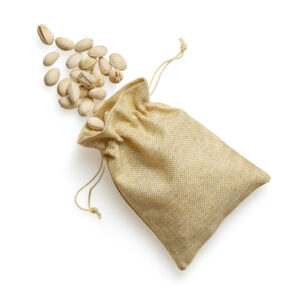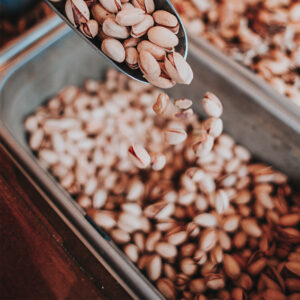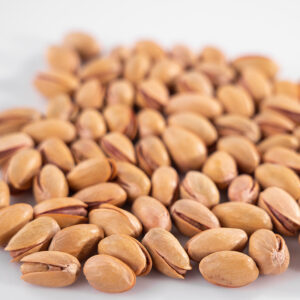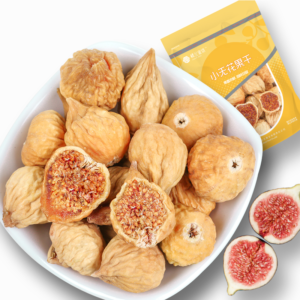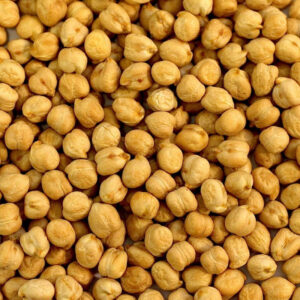Winkel
Pistachios
Pistachio nuts are intertwined with Iranian culture and are actually present in all facets of Iranian life. Pistachio nuts get a mention in all Iranian literature, stories, beliefs, traditions and rituals such as Norooz (New Iranian Year) and Yalda festival are even consumed in weddings and funerals. Iranian poets and literary figures have also referred to pistachio nuts in their works. For Iranians no festivities and feasts can be held without pistachio nuts as well as other nuts like walnuts, almond, raisin, hazelnuts, etc. They celebrate Iranian New Year by eating pistachios. If they cook special dishes, they decorate them with pistachios. Even treats such as ‘Gaz’ contain pistachios. Pistachio nuts are of strategic importance among Iranian producers of agro products.
Iran exports 150,000 to 200,000 tons of pistachios annually.
Iranian pistachios include many local names and each name represent a region shape or quality type. However in term of shapes there are in four main groups. All types can be founded in Iran market in raw or roasted with several productions offers such as mechanically, opened or closed pistachio, roasted and salted, roasted and salted with added lime.
Iranian Jumbo Pistachios

Kaleh Qouchi: This nut is famous for being large. It is sensitive to shortage of water and its leaves are complex. This type of nut is vulnerable to cold weather in spring. It can be harvested in mid September.
On the whole Kalleh Ghouchi is not being budded anymore and production is from existing trees. Although commercially quite successful, Kalleh Ghouchi trees showed a steep drop in growth and production as they grew older than 40 years old. It is expected that the production would slowly decline.
Available sizes are 20/22, 22/24 and 24/26, with 18/20 being available in small quantities.
– Iranian long pistachios

– Iranian long pistachios
The most famous local brands of Iranian long pistachio are as the following:
1- Akbari: This type is the highest economic value. Its fruits are large and almond shaped. It can be harvested in late September. This is a newer variety with good yield and with long, large nuts.
2- Momtaz: The fruit of this nut is almond shaped. It is very delicious compared to other types of pistachios. It can be harvested in late September.
3- Badami; This nut is generally small. It mainly grows in gardens of Zarand, Kerman. It can be harvested in early summer.
4- Ahmad Aghaei: This nut is rather large and its fruit is almond shaped. It can be harvested in late September. The newest commercial variety, very popular with the farmers, because of high yield and its shorter time to reach production. It is very popular in some markets like India and Greece. Production of this variety is increasing. It also has the whitest shell hue among the four.
Available sizes of Iranian Long Pistachio are 20/22, 22-24 and 24/26, with 18/20 also available in small quantities. Pistachio size unit is the number of nuts in one Once.
– Iranian Round Pistachios

Fandoghi: This cultivar is the most widely available pistachio variety and grows in most pistachio growing areas of Iran. Fandoghi is of round type and has the lowest shape index among the four cultivars. In recent years, around 50% of Iranian production is of the Fandoghi type. The reason is its limited yield, the new orchards are seldom planted with this variety.
It comes in the following sizes 28/30, 30/32 and 32/34 nuts per ounce. Size 26/28 is also available in small quantities.
– Kernel Pistachio and green skinned pistachios

– Kernel Pistachio and green skinned pistachios
This type of pistachio has totally green color which is used in food industrial. Commonly use to color and flavor the ice cream, chocolate or cake.
Packaging: Normal packing Plastic bag, other packing such as carton.
Storage: Once they have been dried, nuts can be held at 20 ºC (68 ºF) and 65 to 70% RH for up to a year Pistachios are considerably less prone to acidification (precipitated by oxidation of polyunsaturated fatty acids, PUFA) than are almonds and, particularly, pecans and walnuts. These commodities are also high in fat content, but walnut and pecan oils have a much high per content of PUFA than pistachio oil. Controlled Atmosphere Considerations: While relatively stable when stored in air at 20 ºC (68 ºF), storage under high CO2, reduced O2(< 0.5%) and lower temperature (0 to 10 ºC) further improves flavor stability with the added benefit of providing insect control. Vacuum packaging or N2flushing of packages also provides benefits.
Raisins
The sultana is a “white” (pale green), oval seedless grape variety also called the sultanina, Thompson Seedless (United States), Lady de Coverly (England), and oval-fruited Kishmish (Iran, Turkey). It is assumed to originate from the Asian part of the Ottoman Empire. In some countries, especially Commonwealth countries, it is also the name given to the raisin made from it or from larger seedless grapes; such sultana raisins are often called simply sultanas or sultanis. These are typically larger than Zante currants (which are actually a kind of dried grape, not currants in the botanical sense), and the Thompson variety is smaller than many seeded raisins. In the USA, the name “raisin” is applied to all dried grapes, so that the breakfast cereal known “Sultana Bran” in Australia and the United Kingdom is called Raisin Bran in the United States. Other types of raisins like Golden, Sundried and etc are coming from different drying process of Sultana raisins.
Another seedless grape variety from the former Ottoman Empire, the round-fruited Kishmish, is also dried to make a larger sultana raisin especially in Iran Empire.
Raisins can contain up to 72% sugars by weight, most of which is fructose and glucose. They also contain about 3% protein and 3.7%–6.8% dietary fiber. Raisins, like prunes and apricots, are also high in certain antioxidants, but have a lower vitamin C content than fresh grapes. Raisins are low in sodium and contain no cholesterol.
Data presented at the American College of Cardiology’s 61st Annual Scientific Session in 2012 suggests that, among individuals with mild increases in blood pressure, the routine consumption of raisins (three times a day) may significantly lower blood pressure, especially when compared to eating other common snacks.
Production
1-Washing: In the washing part the raw material (Dried Grape) is double washed and after adjusting the hummidity on heating room goes to sorting and packing part.
2- Sorting and Packing:For sorting raisins Goldenlotus co. uses Laser technology by Laser Sorter Machine (BEST Helius 2015) and X-Ray Machin (BEST IXUS 2015) and finally the cartons pass from Metal Detector for final check.
Sun dried raisin is called to ripened fruit of different varieties of grapes which is being dried in direct sunlight and natural air flow and without adding any material; it turns to brown in this process. Temperature and humidity of the environment during the drying process is an important factor which directly affects the quality of product. These kinds of raisins are available in types of seeded and seedless.
– Golden Kashmari Raisins

Long Golden Raisins:
Iranian Long Golden raisins are produced from special variety of grapes which is known as Pekami (Grows East of Country).
Produced in BRC, HACCP, and ISO Approved plant utilizing advance sorting technology.
Best Stored: In a cool, dry, clean. Recommended storage temperature is between 10-15 Celsius degrees, with relative humidity below 50%
Packaging: 10 KG Carton/12.5 KG Carton
Golden Raisins

Ripen fruits of different varieties of seedless grapes, which have smooth round shape and amber or golden yellow color. Sulphur gas is being used in the drying process.
The product comes from seedless grapes of the Vitis vinifera variety. Golden Raisins are grown in the sunny vineyard in Iran. They are made using sulfur fumigation process and shade dried so they are golden amber in color with a naturally sweet and fruity flavor.
After two times washing (Double washed), golden raisins are dried, coated with vegetable oil, stemmed, mechanically cleaned, laser sorted and metal detected under care of hygienic condition.
Packaging: 10 KG Carton/ 12.5 KG Carton
Storage: In a cool, dry, clean and well ventilated place. Recommended storage temperature is between 10-15 Celsius degrees
ربان هلندی
ربان هلندیربان هلندیربان هلندیربان هلندیربان هلندیربان هلندیربان هلندیربان هلندیربان هلندیربان هلندیربان هلندیربان هلندیربان هلندیربان هلندیربان هلندیربان هلندیربان هلندیربان هلندیربان هلندیربان هلندیربان هلندیربان هلندیربان هلندیربان هلندیربان هلندیربان هلندیربان هلندیربان هلندیربان هلندیربان هلندیربان هلندیربان هلندیربان هلندیربان هلندیربان هلندیربان هلندیربان هلندیربان هلندیربان هلندیربان هلندیربان هلندیربان هلندیربان هلندیربان هلندیربان هلندیربان هلندیربان هلندیربان هلندیربان هلندیربان هلندیربان هلندیربان هلندیربان هلندیربان هلندی
Dosing machinery



 Eenvoudig bedienbare gravimetrische feeders om ieder type materiaal de baas te zijn
Movacolor hoorde bij de eerste groep pioniers die de wereld door de ontwikkeling van de uiterst nauwkeurige MCBalance kennis liet maken met hun gepatenteerde gravimetrische doseertechnologie. Deze doseerunit staat voor de hoogste norm op het gebied van gravimetrische dosering en kan dagelijks door kunststoffenproducenten worden toegepast in extrusie- spuitgiet- en blaasgietprocessen. De uiterst precieze Movacolor gravimetrische doseertechnologie is gebaseerd op een weegsysteem uitgaande van gewichtsverlies en op een doseercilinder die in een rechte lijn doseert, zonder pulsaties.
De gravimetrische feeders van Movacolor zijn uitgerust met een Movacolor touchscreen-bedieningspaneel en MCSmart-software, waarmee u de volledige controle over uw extrusie-, spuitgiet- of blaasgietproces heeft. De Movacolor touchscreen-bedieningspanelen zijn zo ontworpen dat iedere operator in de kunststofverwerkende industrie ermee kan werken. Het initiële opstarten van uw spuitgietmachine of extruder gebeurt in een handomdraai.
Voor het uitbreiden van de succesvolle productserie gravimetrische feeders richtte Movacolor zich op de hindernissen waar kunststoffenproducenten tegenaan lopen bij het doseren van lastig verwerkbare materialen zoals maalgoed, poeder of vloeistof. Met dat doel hebben de ingenieurs van Movacolor de MCTwin, de MCHybrid 30R-series en de MCHigh Output 2500R ontwikkeld, die maalgoed probleemloos kunnen verwerken. Bovendien kunnen de MCPowder, de MCPowder High Output en de MCLiquid eenvoudig materialen zoals poeders en vloeistoffen doseren.
Modulaire gravimetrische doseersystemen voor specifieke processen van kunststofproductie
Voor hogere capaciteiten heeft Movacolor de MCHigh Output en de MCHigh Output 2500R ontwikkeld. Deze gravimetrische doseersystemen kunnen vanaf 50 kilogram per uur tot wel 1.200 kilogram per uur doseren zonder in te leveren op precisie. De MCHigh Output 2500R is speciaal ontwikkeld voor het doseren van grote hoeveelheden maalgoed met een lage bulkdichtheid, zoals PET-vlokken, die tot wel 75% in het productieproces kunnen worden hergebruikt.
Movacolor heeft ook gravimetrische mengers in hun productserie, uniek in de doseerwereld. De innovatieve gravimetrische mengers MCHybrid 30 en MCHybrid 200 hebben een uniek doseerprincipe dat twee technologieën in één systeem verenigt: batchmengen en in-line gravimetrisch doseren. De productserie gravimetrische mengers van Movacolor is ook verkrijgbaar in een maalgoed-versie: de MCHybrid 30R-series.
Alle gravimetrische doseersystemen van Movacolor zijn modulair. Dat wil zeggen dat kunststoffenproducenten die werken met een spuitgietmachine, blaasgietmachine of extruder een Movacolor doseerunit kunnen gebruiken die helemaal is afgestemd op de unieke wensen van de klant. Deze specifieke doseerunit is perfect geschikt voor alle productietypes voor toepassingen in spuitgieten, blaasgieten of extrusie. De doseerunit monteren of gereedmaken voor gebruik is kinderspel en kan door iedereen die in de productie werkt worden gedaan.
Volumetrische dosering voor spuitgieten en extrusie
Movacolor ontwikkelt en verhandelt volumetrische doseersystemen met een unieke, zeer precieze doseercilinder voor extrusie en spuitgieten. Onze volumetrische doseersystemen worden in fabrieken overal ter wereld gebruikt en kunnen onder vrijwel alle omstandigheden werken.
Eenvoudig bedienbare gravimetrische feeders om ieder type materiaal de baas te zijn
Movacolor hoorde bij de eerste groep pioniers die de wereld door de ontwikkeling van de uiterst nauwkeurige MCBalance kennis liet maken met hun gepatenteerde gravimetrische doseertechnologie. Deze doseerunit staat voor de hoogste norm op het gebied van gravimetrische dosering en kan dagelijks door kunststoffenproducenten worden toegepast in extrusie- spuitgiet- en blaasgietprocessen. De uiterst precieze Movacolor gravimetrische doseertechnologie is gebaseerd op een weegsysteem uitgaande van gewichtsverlies en op een doseercilinder die in een rechte lijn doseert, zonder pulsaties.
De gravimetrische feeders van Movacolor zijn uitgerust met een Movacolor touchscreen-bedieningspaneel en MCSmart-software, waarmee u de volledige controle over uw extrusie-, spuitgiet- of blaasgietproces heeft. De Movacolor touchscreen-bedieningspanelen zijn zo ontworpen dat iedere operator in de kunststofverwerkende industrie ermee kan werken. Het initiële opstarten van uw spuitgietmachine of extruder gebeurt in een handomdraai.
Voor het uitbreiden van de succesvolle productserie gravimetrische feeders richtte Movacolor zich op de hindernissen waar kunststoffenproducenten tegenaan lopen bij het doseren van lastig verwerkbare materialen zoals maalgoed, poeder of vloeistof. Met dat doel hebben de ingenieurs van Movacolor de MCTwin, de MCHybrid 30R-series en de MCHigh Output 2500R ontwikkeld, die maalgoed probleemloos kunnen verwerken. Bovendien kunnen de MCPowder, de MCPowder High Output en de MCLiquid eenvoudig materialen zoals poeders en vloeistoffen doseren.
Modulaire gravimetrische doseersystemen voor specifieke processen van kunststofproductie
Voor hogere capaciteiten heeft Movacolor de MCHigh Output en de MCHigh Output 2500R ontwikkeld. Deze gravimetrische doseersystemen kunnen vanaf 50 kilogram per uur tot wel 1.200 kilogram per uur doseren zonder in te leveren op precisie. De MCHigh Output 2500R is speciaal ontwikkeld voor het doseren van grote hoeveelheden maalgoed met een lage bulkdichtheid, zoals PET-vlokken, die tot wel 75% in het productieproces kunnen worden hergebruikt.
Movacolor heeft ook gravimetrische mengers in hun productserie, uniek in de doseerwereld. De innovatieve gravimetrische mengers MCHybrid 30 en MCHybrid 200 hebben een uniek doseerprincipe dat twee technologieën in één systeem verenigt: batchmengen en in-line gravimetrisch doseren. De productserie gravimetrische mengers van Movacolor is ook verkrijgbaar in een maalgoed-versie: de MCHybrid 30R-series.
Alle gravimetrische doseersystemen van Movacolor zijn modulair. Dat wil zeggen dat kunststoffenproducenten die werken met een spuitgietmachine, blaasgietmachine of extruder een Movacolor doseerunit kunnen gebruiken die helemaal is afgestemd op de unieke wensen van de klant. Deze specifieke doseerunit is perfect geschikt voor alle productietypes voor toepassingen in spuitgieten, blaasgieten of extrusie. De doseerunit monteren of gereedmaken voor gebruik is kinderspel en kan door iedereen die in de productie werkt worden gedaan.
Volumetrische dosering voor spuitgieten en extrusie
Movacolor ontwikkelt en verhandelt volumetrische doseersystemen met een unieke, zeer precieze doseercilinder voor extrusie en spuitgieten. Onze volumetrische doseersystemen worden in fabrieken overal ter wereld gebruikt en kunnen onder vrijwel alle omstandigheden werken.

 Instapmodel voor volumetrische dosering: MC12 Economy
Het volumetrische doseersysteem MC12 Economy is het instapmodel van Movacolor en wordt goed verkocht voor toepassingen in spuitgieten. De MC12 Economy is ons voordeligst geprijsde doseersysteem en is bij uitstek geschikt voor het kleuren van PET, doppen en sluitingen, speelgoed en andere toepassingen binnen de kunststofverwerkende industrie.
Synchroniseer volumetrisch dosering met de MC18 Synchronic
Het volumetrische doseersysteem MC18 Synchronic wordt vooral ingezet in de extrusiebranche. De MC18 Synchronic heeft als speciaal kenmerk dat hij zich automatisch aan de snelheid van de extruder aanpast. Kunststofproducenten die op zoek zijn naar een automatisch vulsysteem om de trechter met masterbatch, poeder of maalgoed te vullen, kiezen voor ons volumetrisch doseersysteem MC18 Synchronic.
Kalibreer volumetrisch dosering met de MC30 Auto Calibrate
Het volumetrische doseersysteem MC30 Auto Calibrate kan automatisch materiaal kalibreren. Andere extra kenmerken zijn:
Instapmodel voor volumetrische dosering: MC12 Economy
Het volumetrische doseersysteem MC12 Economy is het instapmodel van Movacolor en wordt goed verkocht voor toepassingen in spuitgieten. De MC12 Economy is ons voordeligst geprijsde doseersysteem en is bij uitstek geschikt voor het kleuren van PET, doppen en sluitingen, speelgoed en andere toepassingen binnen de kunststofverwerkende industrie.
Synchroniseer volumetrisch dosering met de MC18 Synchronic
Het volumetrische doseersysteem MC18 Synchronic wordt vooral ingezet in de extrusiebranche. De MC18 Synchronic heeft als speciaal kenmerk dat hij zich automatisch aan de snelheid van de extruder aanpast. Kunststofproducenten die op zoek zijn naar een automatisch vulsysteem om de trechter met masterbatch, poeder of maalgoed te vullen, kiezen voor ons volumetrisch doseersysteem MC18 Synchronic.
Kalibreer volumetrisch dosering met de MC30 Auto Calibrate
Het volumetrische doseersysteem MC30 Auto Calibrate kan automatisch materiaal kalibreren. Andere extra kenmerken zijn:
- Nauwkeurig vullen dankzij doseercilinder
- Snelheid stappenmotor vanaf 0,1 tot 200 tpm
- Handmatige aanpassing
- Capaciteit 0,07 - 180 kg/u, gemeten met normale granulaire masterbatch 0,8 kg/dm3
- Automatische opslagfunctie voor recepturen
- Besturingsmenu met een grafisch lcd-scherm met achtergrondverlichting
- De MC30 is tevens voorzien van een waarschuwings- en alarmfunctie en een geïntegreerde besturing voor het vulsysteem
- Dit volumetrische vulsysteem is zowel geschikt voor spuitgieten als voor extrusie.
 MCSmart
MCSmart monitort de prestaties van alle gravimetrische systemen van Movacolor, bestuurd vanuit één tot een onbeperkt aantal touchscreenunits. Het systeem is gebaseerd op een SQL-database voor 24/7 gegevensverzameling.
MCSmart
MCSmart
MCSmart monitort de prestaties van alle gravimetrische systemen van Movacolor, bestuurd vanuit één tot een onbeperkt aantal touchscreenunits. Het systeem is gebaseerd op een SQL-database voor 24/7 gegevensverzameling.
MCSmart
 Vulsystemen die automatisch uw trechter vullen
Movacolor biedt verschillende vulsystemen in diverse maten voor de automatische toevoer van elk type hoofdmateriaal naar uw trechter. De vulsytemen zijn gemaakt van hoogwaardig materiaal en hebben een optimale doorstroming. Het assortiment bestaat uit persluchtvulsystemen (ME en MV), automatische 1-fase en automatische 3-fase vulsystemen.
Vulsystemen met perslucht voor masterbatch, maalgoed en vrijstromende poeders
De persluchtvulsystemen van Movacolor werken op dezelfde manier als standaard vulsystemen, hoewel het materiaal wordt verplaatst met perslucht. Persluchtvulsystemen worden gebruikt op verwerkingsmachines met lage doorvoer en kunnen worden gebruikt om veel materialen te transporteren voor elke soort gravimetrische dosering of volumetrische doseringstoepassing. De ingenieurs van Movacolor hebben twee soorten persluchtvulsystemen ontworpen: het Movacolor Ejector (ME) vulsysteem en Movacolor Vacuum (MV) vulsysteem. Beide typen persluchtvulsystemen zijn ontworpen om een specifiek soort materiaal te transporteren.
Movacolor Ejector (ME) persluchtvulsystemen zijn ontwikkeld voor het transporteren van materialen zoals masterbatch en maalgoed. De ME-vulsysteem kan rechtstreeks op de materiaalhoppers van 6 en 12 liter worden gemonteerd. De maximale capaciteit van een ME-vulsysteem is 40 tot 125 kg / uur (materiaal afhankelijk). Het ME-vulsysteem is uitgerust met een trechterdeksel, stoffilter, magneetventiel, materiaalslang, Asens niveausensor en zuigsonde. Movacolor Vacuüm (MV) Vulsystemen zijn ontwikkeld om vrij stromende poeders en / of korrels te transporteren. Het MC vulsysteem is uitgerust met een trechterdeksel, vacuümkamer met filter, perslucht magneetventiel, materiaalslang, Asens niveausensor en zuigsonde.
Vulsystemen (1-fase) voor automatisch transport van vrij stromende, korrelvormige grondstof
Het 1-fase MFD motorvulsysteem van Movacolor is ontworpen voor het automatisch transporteren van vrij stromende, korrelvormige kunststof grondstoffen uit een zak of container naar de trechter van een verwerkingsmachine of een andere trechter. De maximale capaciteit van de 1-fase MFD motorvulsystemen is 30 tot 120 kg / h. De MFD-motorvultrechter is uitgerust met een materiaalslang en een zuigsonde. Deze vulsystemen kunnen op een steunframe of hoofdmateriaaltrechter worden gemonteerd. MFD-motorvulsystemen zijn ook verkrijgbaar met een borstelloze motor.
Vulsystemen (3-fase) voor het transport van vrijstromend poeder of korrels
Het 3-fase motorvulsysteem van Movacolor is een vacuümvulsysteem die is ontworpen voor het transporteren van vrijstromende korrels of poeder vanuit een zak of bak naar de tussentrechter van de verwerkingsmachine of een andere trechter. De maximale capaciteit van een driefasig motorvulsysteem is 150 tot 2.000 kg / uur. De 3-fase vulsysteem is uitgerust met een materiaalslang en zuigsonde. Deze vulsystemen kunnen rechtstreeks op een steunframe of hoofdmateriaaltrechter worden gemonteerd.
Vulsystemen die automatisch uw trechter vullen
Movacolor biedt verschillende vulsystemen in diverse maten voor de automatische toevoer van elk type hoofdmateriaal naar uw trechter. De vulsytemen zijn gemaakt van hoogwaardig materiaal en hebben een optimale doorstroming. Het assortiment bestaat uit persluchtvulsystemen (ME en MV), automatische 1-fase en automatische 3-fase vulsystemen.
Vulsystemen met perslucht voor masterbatch, maalgoed en vrijstromende poeders
De persluchtvulsystemen van Movacolor werken op dezelfde manier als standaard vulsystemen, hoewel het materiaal wordt verplaatst met perslucht. Persluchtvulsystemen worden gebruikt op verwerkingsmachines met lage doorvoer en kunnen worden gebruikt om veel materialen te transporteren voor elke soort gravimetrische dosering of volumetrische doseringstoepassing. De ingenieurs van Movacolor hebben twee soorten persluchtvulsystemen ontworpen: het Movacolor Ejector (ME) vulsysteem en Movacolor Vacuum (MV) vulsysteem. Beide typen persluchtvulsystemen zijn ontworpen om een specifiek soort materiaal te transporteren.
Movacolor Ejector (ME) persluchtvulsystemen zijn ontwikkeld voor het transporteren van materialen zoals masterbatch en maalgoed. De ME-vulsysteem kan rechtstreeks op de materiaalhoppers van 6 en 12 liter worden gemonteerd. De maximale capaciteit van een ME-vulsysteem is 40 tot 125 kg / uur (materiaal afhankelijk). Het ME-vulsysteem is uitgerust met een trechterdeksel, stoffilter, magneetventiel, materiaalslang, Asens niveausensor en zuigsonde. Movacolor Vacuüm (MV) Vulsystemen zijn ontwikkeld om vrij stromende poeders en / of korrels te transporteren. Het MC vulsysteem is uitgerust met een trechterdeksel, vacuümkamer met filter, perslucht magneetventiel, materiaalslang, Asens niveausensor en zuigsonde.
Vulsystemen (1-fase) voor automatisch transport van vrij stromende, korrelvormige grondstof
Het 1-fase MFD motorvulsysteem van Movacolor is ontworpen voor het automatisch transporteren van vrij stromende, korrelvormige kunststof grondstoffen uit een zak of container naar de trechter van een verwerkingsmachine of een andere trechter. De maximale capaciteit van de 1-fase MFD motorvulsystemen is 30 tot 120 kg / h. De MFD-motorvultrechter is uitgerust met een materiaalslang en een zuigsonde. Deze vulsystemen kunnen op een steunframe of hoofdmateriaaltrechter worden gemonteerd. MFD-motorvulsystemen zijn ook verkrijgbaar met een borstelloze motor.
Vulsystemen (3-fase) voor het transport van vrijstromend poeder of korrels
Het 3-fase motorvulsysteem van Movacolor is een vacuümvulsysteem die is ontworpen voor het transporteren van vrijstromende korrels of poeder vanuit een zak of bak naar de tussentrechter van de verwerkingsmachine of een andere trechter. De maximale capaciteit van een driefasig motorvulsysteem is 150 tot 2.000 kg / uur. De 3-fase vulsysteem is uitgerust met een materiaalslang en zuigsonde. Deze vulsystemen kunnen rechtstreeks op een steunframe of hoofdmateriaaltrechter worden gemonteerd.

Pigments and colorants
Liquid dyes
Coatings Specialty Chemicals
Pistachios
Pistachenoten zijn verweven met de Iraanse cultuur en zijn eigenlijk aanwezig in alle facetten van het Iraanse leven. Pistachenoten krijgen een vermelding in alle Iraanse literatuur, verhalen, overtuigingen, tradities en rituelen zoals Norooz (Nieuw Iraans jaar) en het Yalda-festival worden zelfs geconsumeerd bij bruiloften en begrafenissen. Iraanse dichters en literaire figuren hebben ook verwezen naar pistachenoten in hun werken. Voor Iraniërs kunnen geen festiviteiten en feesten worden gehouden zonder pistachenoten en andere noten zoals walnoten, amandelen, rozijnen, hazelnoten, enz. Ze vieren het Iraanse Nieuwjaar door pistachenoten te eten. Als ze speciale gerechten koken, versieren ze die met pistachenoten. Zelfs lekkernijen zoals 'Gaz' bevatten pistachenoten. Pistachenoten zijn van strategisch belang bij Iraanse producenten van agroproducten.
Iran exporteert jaarlijks 150.000 tot 200.000 ton pistachenoten.
Iraanse pistachenoten bevatten veel lokale namen en elke naam vertegenwoordigt een regiovorm of kwaliteitstype. Qua vormen zijn er echter vier hoofdgroepen. Alle soorten kunnen op de Iraanse markt rauw of geroosterd worden met verschillende productieaanbiedingen zoals mechanisch, geopend of gesloten pistache, geroosterd en gezouten, geroosterd en gezouten met toegevoegde limoen.
Kernel Pistachio and green skinned pistachios
Dit type pistache heeft een volledig groene kleur die wordt gebruikt in de voedingsindustrie. Veel gebruikt om ijs, chocolade of cake te kleuren en op smaak te brengen.
verpakkingen: Normale verpakking Plastic zak, andere verpakking zoals karton.
Bewaring: Na het drogen kunnen noten tot een jaar bij 20 ºC (68 ºF) en 65 tot 70% RV worden bewaard. Pistachenoten zijn aanzienlijk minder vatbaar voor verzuring (veroorzaakt door oxidatie van meervoudig onverzadigde vetzuren, PUFA) dan amandelen en vooral pecannoten en walnoten. Deze grondstoffen hebben ook een hoog vetgehalte, maar walnoot- en pecannootolie hebben een veel hoger PUFA-gehalte dan pistacheolie. Overwegingen bij gecontroleerde atmosfeer: Hoewel relatief stabiel bij opslag in de lucht bij 20 ºC (68 ºF), verbetert opslag onder hoge CO2, verminderde O2 (<0,5%) en lagere temperatuur (0 tot 10 ºC) de smaakstabiliteit verder met als bijkomend voordeel dat het insecten bestrijding. Ook het vacuüm verpakken of N2flushen van verpakkingen biedt voordelen.
Iranian Round Pistachios
Fandoghi: Deze cultivar is de meest verkrijgbare pistachevariëteit en groeit in de meeste pistachegebieden van Iran. Fandoghi is van het ronde type en heeft de laagste vormindex van de vier cultivars. In de afgelopen jaren is ongeveer 50% van de Iraanse productie van het Fandoghi-type. De reden is de beperkte opbrengst, de nieuwe boomgaarden worden zelden met dit ras aangeplant.
Het wordt geleverd in de volgende maten 28/30, 30/32 en 32/34 noten per ounce. Maat 26/28 is ook beschikbaar in kleine hoeveelheden.
Iranian long pistachios
De meest bekende lokale merken van Iraanse lange pistache zijn als volgt:
1- Akbari: Dit type heeft de hoogste economische waarde. De vruchten zijn groot en amandelvormig. Eind september kan geoogst worden. Dit is een nieuwer ras met een goede opbrengst en met lange, grote noten.
2- Momtaz: De vrucht van deze noot is amandelvormig. Het is erg lekker in vergelijking met andere soorten pistachenoten. Eind september kan geoogst worden.
3- Badami; Deze noot is over het algemeen klein. Het groeit voornamelijk in tuinen van Zarand, Kerman. Het kan in de vroege zomer worden geoogst.
4- Ahmad Aghaei: Deze noot is vrij groot en de vrucht is amandelvormig. Eind september kan er geoogst worden. De nieuwste commerciële variëteit, erg populair bij de boeren, vanwege de hoge opbrengst en de kortere tijd om tot productie te komen. Het is erg populair in sommige markten zoals India en Griekenland. De productie van dit ras neemt toe. Het heeft ook de witste schaaltint van de vier.
Beschikbare maten Iraanse Long Pistachio zijn 20/22, 22-24 en 24/26, met 18/20 ook in kleine hoeveelheden. De maateenheid voor pistache is het aantal noten in één keer.
Iranian Jumbo Pistachios
Dried Figs
Vijgen zijn een voedzame vrucht die geelgroen, koper of paars van kleur kan zijn. Je kunt ze schillen en uit de hand eten, ze gebruiken om jam van te maken of toe te voegen aan ijs of gebak. Verse vijgen zijn niet altijd het hele jaar door verkrijgbaar in Iran, maar gedroogde vijgen zijn relatief gemakkelijk te vinden. Hoewel vijgen enige gezondheidsvoordelen kunnen bieden, is de behandeling van elke medische aandoening met vijgen alleen gebaseerd op traditioneel gebruik en niet op wetenschappelijk bewijs.
Macronutriënten
Een portie gedroogde vijgen van 1/4 kop bevat 93 calorieën, 1 gram eiwit, 0,4 gram vet en 24 gram koolhydraten, inclusief 4 gram vezels, of 16 procent van de dagelijkse vezelwaarde. Volgens de Academie voor Voeding en Diëtetiek bevatten gedroogde vijgen meer vezels per portie dan welk ander fruit dan ook.
Micronutriënten
Elke portie gedroogde vijgen levert 253 milligram kalium en 6 microgram vitamine K, of 7 procent van de DV, samen met 60 milligram calcium en 25 milligram magnesium, of 6 procent van de DV voor deze voedingsstoffen. Kalium is nodig voor een goede hart-, spier- en spijsverteringsfunctie. Je lichaam gebruikt vitamine K voor de bloedstolling, calcium voor sterke botten en tanden en magnesium voor het immuunsysteem, de hart- en zenuwfunctie.
Potentiële gezondheidsvoordelen
Vijgen bevatten een type antioxidant, fenolen genaamd, dat het risico op hartaandoeningen en kanker kan verlagen door celbeschadiging door gevaarlijke vrije radicalen te voorkomen. Vezels verlagen het risico op een hoog cholesterolgehalte, hartaandoeningen en constipatie. De vezels in vijgen kunnen je ook helpen gewicht te verliezen, omdat het vijgen meer vullend maakt, waardoor je minder calorieën binnenkrijgt.
Beschikbare maten: A, AA, 101 AA, gestofzuigd, vocht
Verpakking: Karton van 10 KG
Opslag: Op een koele, droge, schone en goed geventileerde plaats. De opslagtemperatuur ligt tussen de 15-20 Celsius graden
Chickpeas
De kikkererwt of kikkererwt (Cicer arietinum) is een peulvrucht van de familie Fabaceae, onderfamilie Faboideae. Het is ook bekend als gram of Bengaalse gram garbanzo of garbanzo bean.
Kikkererwten zijn een voedsel dat rijk is aan voedingsstoffen en een rijk gehalte (> 20% van de dagelijkse waarde, DV) aan eiwitten, voedingsvezels, foliumzuur en bepaalde voedingsmiddelen zoals ijzer en fosfor. Het gehalte aan thiamine, vitamine B6, magnesium en zink is matig, goed voor 10-16 procent van de DV (rechtertabel). Kikkererwten hebben een voor eiwitverteerbaarheid gecorrigeerde aminozuurscore van ongeveer 76 procent, wat hoger is dan fruit, groenten, veel andere peulvruchten en granen.
Verpakking: 10 KG doos, 50 KG PE zak



